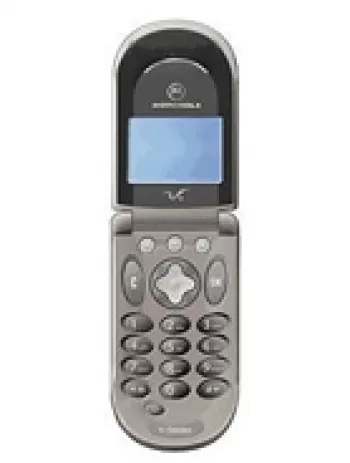
Introduction to Motorola V66
The Motorola V66 was a mobile phone that marked the early 2000s as part of the iconic Motorola cellular lineup. With a focus on sleekness and functionality, the V66 was targeted at users who preferred a compact and stylish device with essential features for communication. Released in 2001, this phone became a popular choice for many due to its practical features and compact design.
Design and Build Quality
The design of the Motorola V66 was one of its most notable features. With dimensions of 84 x 44 x 21 mm and a weight of just 79 grams, it was incredibly compact and lightweight, making it easy to carry around. The phone had a classic clamshell design, which was highly popular at the time, and it came equipped with a Mini-SIM slot. This design allowed the phone to be opened for use and closed to protect the keypad, reducing accidental key presses and prolonging the device's lifespan.
Display Features
The display on the V66 was a monochrome graphic screen, utilizing Motorola's Optimax technology. Despite being basic by today's standards, the display size and resolution, 96 x 54 pixels in a 16:9 ratio and 5 lines of text, were more than adequate for viewing SMS and contact information in the early 2000s. The clarity and readability of the screen were commendable for a feature phone from that era.
Network and Connectivity
The Motorola V66 supported GSM technology with bands for GSM 900, 1800, and 1900 frequencies. This ensured it could operate on different networks across various countries, offering global connectivity. However, advanced data connectivity options like EDGE, 3G, or LTE were not available. It did support GPRS Class 8 for basic data services, making it possible to browse simplistic web pages using the WAP browser included in the phone.
Battery Life and Power Management
Powered by a removable Li-Ion 500 mAh battery, the V66 could last between 40 to 100 hours on standby and offered 2 to 3 hours of talk time. This was fairly standard for mobile phones of the period and underlined the Motorola V66’s suitability for light to moderate use throughout the day. The option to replace the battery provided flexibility for users on the go, ensuring they could maintain connectivity without constant charging.
Memory and Storage
When it comes to memory, the Motorola V66 did not offer any expandable storage options through external card slots, aligning with its purpose as a basic feature phone. It could store up to 500 phonebook entries along with logs for 10 dialed calls, 5 received calls, and 5 missed calls, which was more than sufficient for managing personal contacts and keeping track of recent communications.
Audio and Alert Features
In terms of sound, the phone did not have a loudspeaker or a 3.5mm headphone jack, which were less common features at the time. Alert types were limited to vibrations and monophonic ringtones, both standard features during the early mobile telephone days. While it lacked modern audio capabilities, these features were perfectly functional for ensuring users received notifications for calls and messages.
Games and Additional Features
Another appealing feature of the V66 was its inclusion of games, adding to the entertainment value of the device. Though the games were simple, they provided a good distraction for users. Additional functionalities, such as a clock, were present, but an alarm was notably absent. There was no Java support, limiting apps and advanced functionality, reinforcing its status as a basic phone.
Conclusion
The Motorola V66 stands as a nostalgic symbol of early mobile technology, representing a time when mobile phones focused on communication and simplicity rather than multifunctionality. The V66 was lauded for its sleek design and reliability in basic mobile operations. Though technology has drastically advanced since 2001, devices like the Motorola V66 paved the way for the sophisticated smartphones of today.
Key Features of Motorola V66
- Compact and lightweight design (84 x 44 x 21 mm, 79 g)
- Tri-band GSM support (GSM 900 / 1800 / 1900)
- Monochrome graphic display with Optimax technology
- Phonebook capacity for up to 500 contacts
- Call record storage for 10 dialed, 5 received, and 5 missed calls
- Vibration and Monophonic ringtones for alerts
- WAP browser for basic internet access
- Removable Li-Ion 500 mAh battery with stand-by time of 40-100 hours
- Available in 3 colors
Disadvantages of Motorola V66
- Lacks EDGE for faster data connectivity.
- Discontinued status, meaning no longer officially supported.
- Monochrome display with low resolution of 96 x 54 pixels.
- No expandable memory card slot.
- No camera feature.
- No loudspeaker.
- No 3.5mm audio jack.
- No Bluetooth functionality.
- No Wi-Fi capability.
- No positioning or GPS features.
- No FM radio.
- No USB support detailed in specifications.
- Lacks modern smartphone features such as alarms and advanced sensors.
- Short battery talk time of only 2 to 3 hours.
View Also
More Phones
All Rights Reserved +14266 Phones © Mobilawy 2025

























